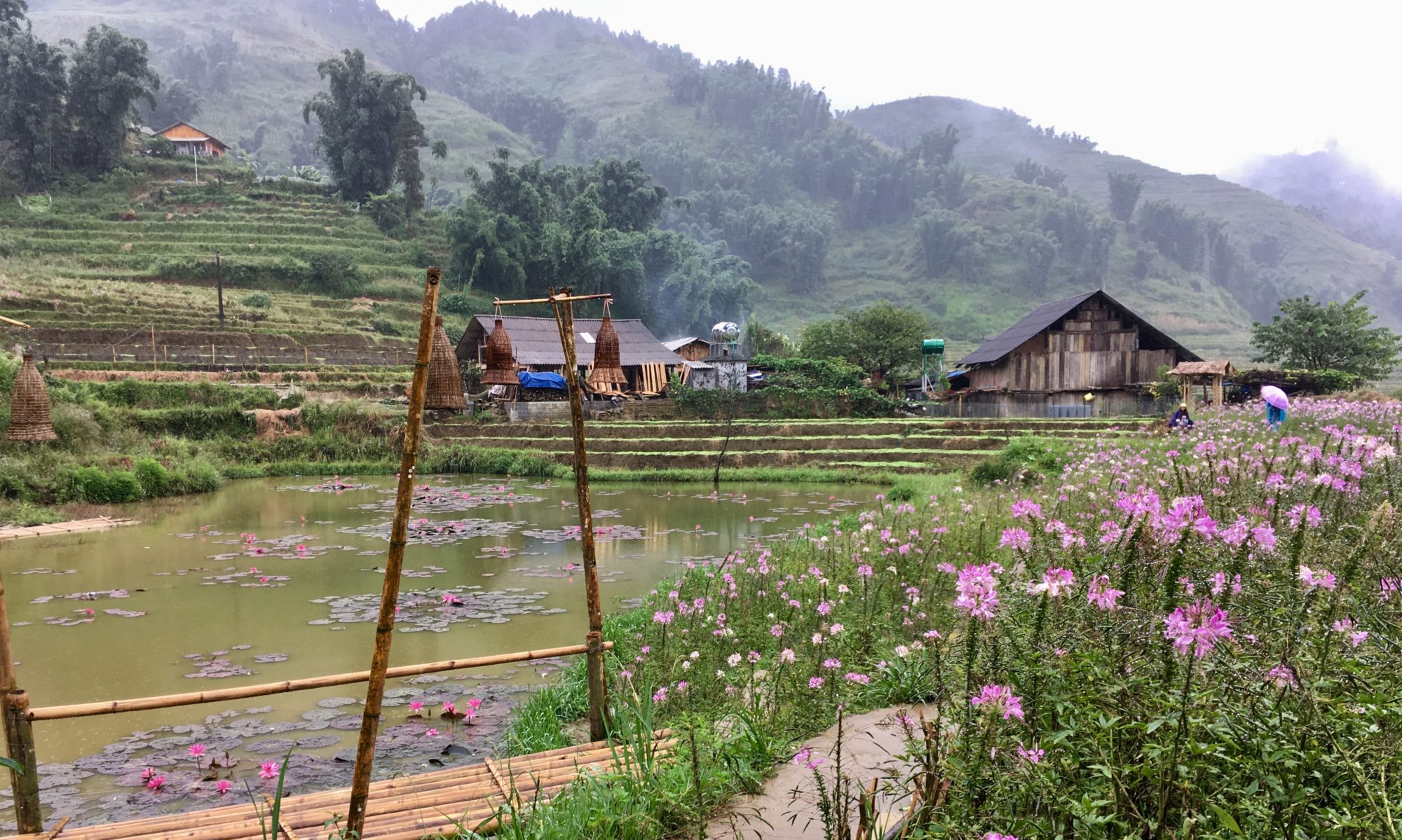The drive to Mount Popa from Bagan took over 2 hours due to the bumpy, potholed roads. It threatened the loss of an amazing lunch we had eaten at Secret House beforehand. Fried duck, fish in curry sauce, green beans with peppers, stir-fried vegetables, and coconut rice. It was the best meal we had in Myanmar. The duck was melt-in-your-mouth good and the coconut rice was creamy tasting and delicious.


The first glimpse of Mount Popa, an extinct volcano, was pretty spectacular. The entire area is carpeted by a lush green forest that extends for as far as the eye can see. The volcanic ash, together with the springs and streams in the area, provide the perfect fertile ground for growing fruits, trees, and plants. We spotted many nurseries along the side of the road selling dragonfruit and flowering plants. To the southwest, the volcanic plug of Taung Kalat (pedestal hill) juts up from its surroundings. The people believe that the shrine at its top is home to powerful Nats or animist spirits, making it a popular pilgrimage site for Burmese.


The climb up the 777 steps to the top of Mount Popa was treacherous in an unexpected way. The first half of the climb was under a roof flanked by stores selling flowers and touristy trinkets. The second half was out in the elements where the tile steps were slippery from the rain. Because it is a part of the temple, we also had to walk it barefoot.


Along the way gangs of macaque monkeys jumped from tree to tree and fought each other like the Jets and the Sharks, complete with bellowing and screeching sound effects. They are not shy with people and will approach in search for food. Women carrying flowers are their favorite targets. Our guide, Tut, told us that late afternoon is the most dangerous time for humans to navigate up and down the stairs. It is when the monkeys rule the mountain. Keep everything you don’t want taken away by the monkeys out of sight!



We trekked up with Burmese of all ages who have traveled from near and far to worship the Nats. There are a few versions of the lore of how this place came to be the famous home of the spirits. Like most things in Myanmar. Even though the animist tradition is unrelated to Buddhism and preceded it, many Burmese subscribe to both sets of beliefs. It seems in parts of the world where history stretches for thousands of years, superstition is as natural as shadows in a forest.


There is a saying in Thai, “If you don’t believe, don’t disrespect.” Even if we do not share the same belief as another, it should not stop dialogue between all sides. Myanmar has a complicated past and present. There are things the government is doing that I fundamentally disagree with. But being here opened my eyes and mind to its people. As we watched a rainbow arch over the majestic landscape after heavy rainfall, it was easy to see why many Burmese revere this lyrical place.


























































